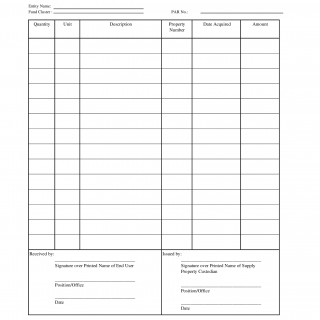Property Acknowledgment Receipt
A Property Acknowledgment Receipt (PAR) is a legal document that serves as evidence of the transfer of ownership or possession of a property. It consists of several parts, including a header with the PAR number, the date of issuance, and the names of the parties involved in the transaction.
The important fields in the PAR include the description of the property, the name and address of the buyer and seller, the purchase price, and the terms and conditions of the sale. It is important to carefully review and complete all fields to ensure the accuracy of the information provided.
The parties involved in the transaction typically include the buyer and seller of the property, as well as any witnesses or notaries who may be required to sign the PAR. Additional documents that may need to be attached include proof of ownership, such as a deed or title, as well as any loan documents or contracts related to the sale.
Examples of applications for a PAR include the sale of a home, the transfer of ownership of a vehicle, or the purchase of a business. It is important to carefully review and understand the terms and conditions of the PAR before signing, as it serves as a legally binding agreement between the parties involved.
Strengths of a PAR include its ability to provide a clear and concise record of a property transaction, as well as its legal enforceability. Weaknesses may include potential errors or omissions in the information provided, which could lead to disputes or legal challenges.
Opportunities for improvement may include the use of electronic signatures or online forms to streamline the process of completing and submitting a PAR. Threats to the PAR may include the possibility of fraud or forgery, which could undermine the validity of the document.
Alternative forms or analogues to a PAR may include a bill of sale, a deed of trust, or a purchase agreement. The main differences between these documents may include the specific terms and conditions of the transaction, as well as the legal requirements for each.
To fill and submit a PAR, the parties involved should carefully review and complete all fields in the document, attach any required supporting documents, and sign and date the PAR in the presence of a notary or other authorized witness. The PAR should be stored in a safe and secure location for future reference or legal purposes.

